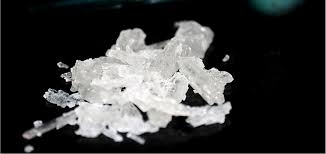Blog
Ketamine Crystal Side Effects

Ketamine Crystal Side Effects, Ketamine crystals, a form of the dissociative anesthetic ketamine, have been increasingly used for both medical and recreational purposes. Originally developed as an anesthetic for surgeries, ketamine is now recognized for its potential in treating mental health conditions like depression and PTSD. However, while its benefits in controlled clinical settings are being explored, it’s crucial to be aware of the potential ketamine crystal side effects, especially when the substance is misused or taken without medical supervision.
What Are Ketamine Crystals?
Ketamine crystals are the solid, purified form of ketamine hydrochloride. When ground into powder, they are often used recreationally or illegally. In clinical settings, ketamine is usually administered intravenously or intranasally under strict medical supervision.
Common Side Effects of Ketamine Crystals
Whether used recreationally or medically, ketamine can cause a range of side effects depending on dosage, frequency of use, and individual body chemistry. Some of the most commonly reported ketamine crystal side effects include:
1. Dissociation and Hallucinations
One of the most known effects of ketamine is dissociation — a state where the user feels detached from their body or surroundings. This can be accompanied by visual or auditory hallucinations, making the experience feel dream-like or surreal.
2. Cognitive Impairment
Ketamine can impair memory, attention, and decision-making. Long-term or frequent use may lead to persistent cognitive issues, even after stopping the drug.
3. Urinary Tract Problems
Chronic ketamine use is associated with bladder issues, often referred to as “ketamine bladder syndrome.” Symptoms include frequent urination, pain while urinating, and in severe cases, irreversible bladder damage.
4. Nausea and Vomiting
These are common short-term side effects, especially when the drug is taken in high doses or mixed with other substances.
5. Increased Heart Rate and Blood Pressure
Ketamine can stimulate the cardiovascular system, leading to elevated heart rate and blood pressure — risky for individuals with heart conditions.
6. Addiction and Dependency
Though not as physically addictive as opioids, ketamine can lead to psychological dependence. Users may begin to crave the dissociative state and feel the need to use ketamine more frequently to achieve the same effects.
Less Common but Serious Side Effects
-
Respiratory depression (especially when combined with other depressants)
-
Seizures (in rare cases)
-
Liver damage (after prolonged high-dose use)
-
Psychosis-like symptoms in some individuals
Responsible Use and Medical Supervision
While recreational use of ketamine crystals poses significant risks, clinical use under medical supervision can be beneficial. In therapeutic doses and settings, side effects are typically well-managed and less severe. Mental health professionals often use much lower doses for treatments such as ketamine-assisted psychotherapy.
Conclusion
Ketamine crystals can have both therapeutic benefits and harmful side effects. Understanding the ketamine crystal side effects is essential for anyone considering its use. Whether used legally under medical care or misused recreationally, ketamine is a powerful substance that affects both the brain and body. To ensure safety, it is always best to seek medical advice and avoid self-administration or unregulated sourcing.
